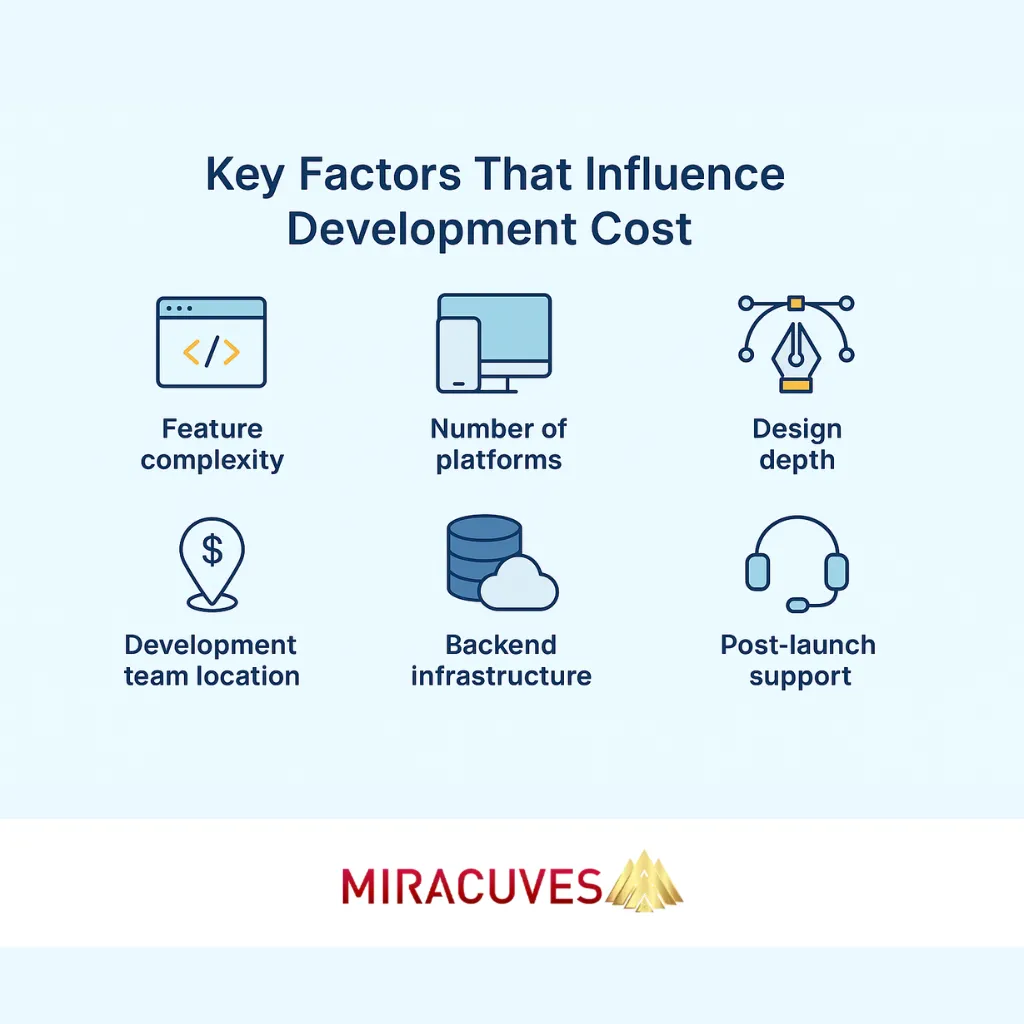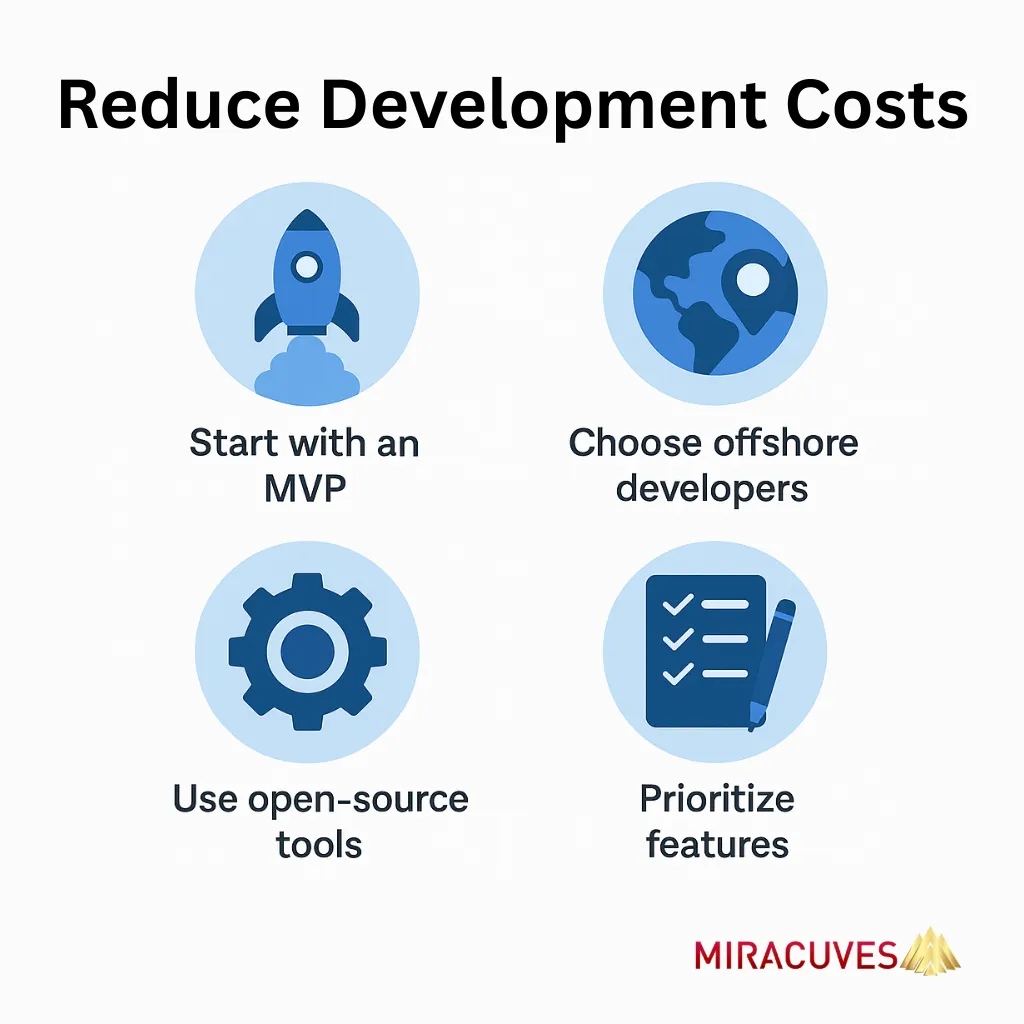What’s the Cost to Develop a LinkedIn Clone App in 2025?
Create a powerful, customizable streaming solution with Miracuves’ Linkedin Clone, equipped with high-performance features and next-gen technology.
If you’re planning to build a LinkedIn-like platform, one of the first questions on your mind is probably: “How much will it cost?”
And the answer? It depends — on your feature set, team location, tech stack, timeline, and whether you’re starting from scratch or customizing a white-label solution.
In this article, we’ll break down the real factors that affect the LinkedIn clone app development cost, share estimated ranges for MVP vs. full-featured versions, and help you make smarter decisions about your development budget.

Key Factors That Influence Development Cost
There’s no one-size-fits-all price for building a LinkedIn clone — your final cost depends on a mix of technical, strategic, and resource-driven factors.
Here are the biggest drivers:
Feature complexity → More features = more design, coding, and QA time. Advanced tools like AI matching or real-time chat raise costs.
Number of platforms → Building for iOS, Android, and web simultaneously increases development hours.
Design depth → Custom, high-end UI/UX takes longer and costs more than template-based design.
Development team location → Hourly rates vary from $20–$50/hr (Asia) to $100–$200/hr (North America).
Backend infrastructure → Cloud storage, content delivery networks, and security features add backend costs.
Post-launch support → Ongoing maintenance, updates, and server costs should also be factored in.
These factors will shape your initial estimate — and your long-term investment.
Linkedin Custom App Development Cost Breakdown (2025 Guide)
|
App Type
|
Estimated Cost Range (USD)
|
Description
|
|---|---|---|
|
MVP (Minimum Viable Product)
|
$15,000 – $30,000
|
Basic features: user profiles, feed, messaging, jobs board
|
|
Standard Version
|
$30,000 – $70,000
|
Add search filters, AI suggestions, analytics, admin panel
|
|
Full-Featured App
|
$70,000 – $150,000+
|
Advanced features, custom UI/UX, integrations, full scalability
|
These estimates include frontend, backend, testing, and basic UI/UX design — but can shift depending on your exact requirements and regional pricing.
LinkedIn-Style App Development Cost by Miracuves (2025 Pricing)
These costs cover UI/UX, backend logic, and deployment — excluding hosting, third-party APIs, and marketing.
|
App Type
|
Estimated Cost Range (USD)
|
Description
|
|---|---|---|
|
MVP (Minimum Viable Product)
|
$999 – $1,499
|
Core professional networking features such as profile creation, feed system, job listings, and basic messaging — ideal for startups validating user traction.
|
|
Standard Version
|
$1,500 – $2,199
|
Includes AI-driven recommendations, analytics dashboard, skill verification, and connection insights — perfect for mid-scale platforms.
|
|
Full-Featured App
|
$2,899 (Miracuves)
|
All-inclusive Web + App + Admin solution with premium memberships, video chat, resume builder, and real-time analytics. Delivered with full source code and customization rights.
|
Note: Pricing reflects Miracuves’ development-only services. Hosting, third-party APIs, and premium integrations (e.g., AI or CRM) are billed separately.
Launch your LinkedIn-style professional network in just 3–9 days with Miracuves — fast, scalable, and enterprise-ready.
Region-Wise Development Cost Comparison
Where your development team is located can significantly impact your budget — without necessarily affecting quality.
Here’s a general comparison:
|
Region
|
Hourly Rate (USD)
|
Typical Cost for Standard App
|
|---|---|---|
|
North America
|
$100 – $200/hr
|
$100,000 – $200,000+
|
|
Western Europe
|
$80 – $150/hr
|
$80,000 – $160,000+
|
|
Eastern Europe
|
$40 – $80/hr
|
$40,000 – $90,000+
|
|
India & Southeast Asia
|
$20 – $50/hr
|
$20,000 – $60,000+
|
Many startups choose to work with offshore teams (especially in India) to get the same output at a much more manageable cost — without cutting corners on quality.
Cost Breakdown by Development Stage
Understanding where your budget goes helps you plan more effectively — and avoid unexpected surprises.
Here’s how typical LinkedIn clone app costs are distributed across stages:
|
Development Stage
|
Estimated % of Total Cost
|
Includes
|
|---|---|---|
|
Discovery & Planning
|
5–10%
|
Market research, competitor analysis, requirement gathering
|
|
UI/UX Design
|
10–15%
|
Wireframing, prototyping, branding, and responsive design
|
|
Frontend & Backend Dev
|
40–50%
|
Core functionality, APIs, architecture, third-party integrations
|
|
Testing & QA
|
10–15%
|
Manual and automated testing across devices and use cases
|
|
Deployment & Launch
|
5–10%
|
Server setup, app store submission, launch readiness
|
|
Maintenance & Updates
|
10–20%
|
Post-launch support, bug fixes, version upgrades, scaling infrastructure
|

Tips to Reduce Development Costs Without Compromising Quality
Building a LinkedIn clone doesn’t have to drain your entire budget. Here are smart ways to cut costs strategically:
Start with an MVP → Focus on core features first, then scale up based on user feedback.
Choose offshore developers → Partnering with experienced teams in India or Southeast Asia can cut costs without sacrificing performance.
Use open-source tools → Leverage free libraries, frameworks, and backend services where possible.
Prioritize features → Skip unnecessary add-ons in version 1. Focus on tools that directly impact user engagement and retention.
Plan in detail → A solid pre-development plan avoids mid-project scope changes (which drive up costs fast).
With the right strategy, you can build a high-quality networking app at a fraction of what top global brands spend.
Choose the Right Development Partner
Even with a solid plan, building a professional networking platform is no easy feat — you need a development team that truly understands the ecosystem. Partnering with the right LinkedIn clone development company can save you time, reduce costs, and help you avoid common pitfalls.
Look for a partner that offers:
Demonstrated expertise in social and professional networking app development
A portfolio showcasing scalable and secure platforms
End-to-end services — from idea validation to post-launch optimization
At Miracuves, we don’t just build clones — we craft growth-ready solutions tailored to your business goals. Let us handle the tech, while you focus on building your user base and brand presence.
Conclusion
Understanding the LinkedIn clone app development cost is key to launching smart — and staying competitive. Whether you’re building a lean MVP or a full-scale professional network, costs will vary based on your goals, features, team, and region.
By focusing on core functionalities, choosing the right tech stack, and working with a skilled development team, you can launch a powerful app without breaking the bank.
Want to go deeper into the features or monetization models of a LinkedIn-like platform? Check out our related guides on build app like linkedin and business model to complete your blueprint.
Frequently Asked Questions
The cost to develop a LinkedIn clone app with Miracuves is $2,899, and the complete platform is delivered within 3–9 days, including setup, testing, and deployment.
Start with an MVP, use open-source tools, and work with an experienced offshore development team to lower costs without sacrificing quality.
With Miracuves, a fully functional LinkedIn clone is built and delivered within 3–9 days, including setup, testing, and deployment — ensuring a ready-to-launch platform fast.
Common hidden costs include post-launch maintenance, app store fees, server costs, and scope creep during development.
Yes — if you choose a modular tech stack and plan for scalability early, you can add new features or expand infrastructure without starting over.



